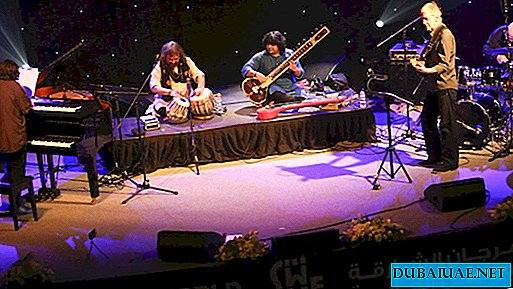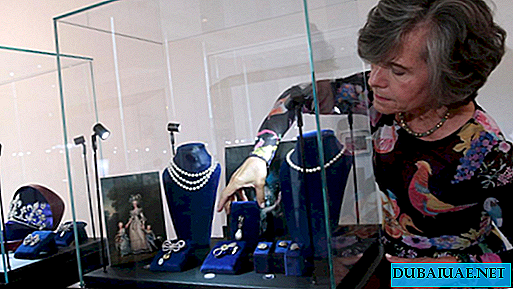 If I were a sultan, I smoked a hookah. This occupation was predetermined by status and nationality. In Caliphate times, starting from the second half of the 14th century, the inhabitants of all Turkish cities in the morning indulged in this occupation.
If I were a sultan, I smoked a hookah. This occupation was predetermined by status and nationality. In Caliphate times, starting from the second half of the 14th century, the inhabitants of all Turkish cities in the morning indulged in this occupation.
Commoners used vessels made of fired clay and wooden tips of smoking pipes. They met the first rays of the morning sun in coffee shops after a hookah with neighbors and friends and, only having fanned themselves with aromas and leisurely discussing the news, set off on business.
Sultans in colorful dresses delighted themselves with smoke, contemplating surrounded by high-ranking guests crystal vessels in which water gurgled, and some berries of cherry or grapes tumbled. Water was sometimes tinted with pomegranate juice and insisted on pink aromas. The sleek fingers, weighed down with silver rings, played with gold and amber mouthpieces. The invitation to smoke in the Istanbul couch was considered the highest grace and a sign of great confidence.
Whatever the hookah, simple or refined, it served as a symbol of peace and friendly sympathies. Flavored tobacco created an atmosphere of festive peace. Smoked strong Iranian tobaccos of a dark color, which before being on specially prepared coals from holly wood were steeped many times, dried and used in apple, strawberry, pink, peach and other odorous mixtures.
In the international relations of the High Port, the eastern smoking device served as an instrument of Turkish diplomacy. The invitation to raise with the Sultan or his viziers testified to the special disposition to foreign guests. When in 1841 one of the Turkish rulers decided not to regale the French ambassador with aromatic smoke, a diplomatic scandal occurred.
It is thanks to the Turks that the hookah or nargile, as it is sometimes called, was widely used in eastern countries and became known in Europe. But both of these words are by no means of Turkish origin, but of Persian origin. Kuwaitis also call this smoking device the word "arjil", which shows "kinship" with one of the previously mentioned Persian terms. In Egypt and many other Arab countries, including the Arabian Peninsula, it is most often known as "shisha."
It is not known for certain where the hookah was invented. It is believed that this smoking device existed in India from time immemorial and was a coconut in which a hollow straw pipe was placed. Later, allegedly, the process of smoking with water was improved in Persia, which made a great and beautiful contribution to the treasury of world civilization and even gave Islam a creed - an elegant crescent moon. Smoking curiosity received its final development in the Ottoman Empire.
Smoking in an atmosphere of oppression was nowhere as prevalent as in Turkey. In Saudi preaching asceticism, smokers are even persecuted. In most cities of the Kingdom, cafes serving tea and coffee smokes are crowded into the suburbs. Perhaps, only during Ramadan, shisha serves as an invariable application to the "shasha" - television screens around which Muslims spend blessed nights of fasting.
 Hookah smoking is the most democratic occupation in societies of countries where men and women, as a rule, have fun separately. Often you can see it in a cafe where families, relatives, friends at work, fellow countrymen gather during fasting days, a smoking pipe migrates from the lips to the lips of the husband, wife, mother-in-law and neighbor or distant relative.
Hookah smoking is the most democratic occupation in societies of countries where men and women, as a rule, have fun separately. Often you can see it in a cafe where families, relatives, friends at work, fellow countrymen gather during fasting days, a smoking pipe migrates from the lips to the lips of the husband, wife, mother-in-law and neighbor or distant relative.
There is an opinion that it’s less harmful to enjoy yourself with a hookah than to smoke cigarettes, as water purifies the smoke passing through it. However, studies show that this judgment is erroneous. Some critics of shisha argue that the harm from smoking one fragrant shisha stuffing is equivalent to the damage that three packs of cigarettes cause to the smoker's health.
Scientists at the medical faculty of Cairo University Al-Azhar associate cancer in the oral cavity with hookah smoking. Doctors working in Dubai believe that a shisha lover poisons himself with more carbon dioxide than a cigarette smoker. They consider smoking no less cooked with honey, fermenting fruit mixtures, the combustion of which forms the toxic organic compound acrolein, which has a harmful effect on the bladder. There is also a hygienic reproach to the hookah, since one device is often smoked by several people relaxing in fragrant cafes.
In the Emirates, hookah establishments work mainly in open areas and exist mainly as a tribute to the popular tourist concepts of oriental exoticism. Tourists themselves not only observe smokers, but also join in the entertainment that they consider traditional and everyday. Many hotels meet exotic pipe lovers and arrange special smoking places. During Ramadan, specific smoky aromas spread through the city streets and create a festive atmosphere.
Meanwhile, it cannot be said that the indigenous locals very much favor shisha, entertainment with which requires a lot of idle time. The hookah smoking tradition was brought here from other Arab countries - Syria, Egypt, Tunisia, who lived under Turkish beys and beks and adopted the customs of official pastime from them. She survives in the Emirates only thanks to visitors to the Arabs and tourists.
Emirates had their own customs of smoking. They have not disappeared, but they do not have open, mass circulation due to the generally negative attitude to smoking in the country, which is suppressed by constantly rising prices for tobacco products. Over the past 15 years, the cost of cigarettes in the UAE has risen several times. In May, a monthly anti-smoking month is held in the country. Specialized centers operate to help those who wish to abandon a bad habit.
 Oddly enough, school youth was the initiator of a return to local tradition. For boys under the age of 18, the sale of tobacco products in the country is strictly prohibited. Teenagers found a way out. They buy local pipes in the markets. And you can get hold of tobacco at home.
Oddly enough, school youth was the initiator of a return to local tradition. For boys under the age of 18, the sale of tobacco products in the country is strictly prohibited. Teenagers found a way out. They buy local pipes in the markets. And you can get hold of tobacco at home.
The indigenous population - Bedouins, sedentary fishermen and pearl catchers smoked and continue to smoke "midah". This is the name of a small, most often wooden tube with a small chubuk, in which tobacco is placed for only 3-4 puffs. The word itself is of local origin and means "smoking tool". Sometimes the emirate’s pipe is also called “latrine”, which seems to be a distortion of the word hookah.
It has nothing to do with the hookah. It is made first of all from the roots of the as-cider small-leaved tree that grows here and in other Arabian countries, which we call the “Christ's turn” and “wild jujuba”. The tubes are made without any quirks. They are straight, smooth, polished, reach a length of 10-15 centimeters, have a narrow mouthpiece and an outer part pointed in the form of a boat nose. Chubuk is very small. Its hole in diameter slightly exceeds the size of a cigarette, and in depth goes about one and a half centimeters.
For midwach, special tobacco is grown. This is done by the inhabitants of the Hatta Oasis, which is located in the mountains a hundred kilometers from Dubai.
One of the Dubai sheikhs told me that once, in not so distant times, the oasis belonged to the Sultanate of Oman. It was presented to Dubai by one of the Omani rulers for helping to resolve tribal feuds and became an important territorial acquisition of the emirate. To its traditional export goods - dried fish and dates, tobacco was added, which is called "spirit" here.
Local spirit requires special preparation. Tobacco is dried on fire and frayed in mortars to a state of powder. Grated plant roots are sometimes added in accordance with the tastes of consumers. Keep the spirit in the vessels of goat horns. The Bedouin, in whose clothes there were no pockets, setting off on wandering wilderness, tied midah and a goat's snuffbox to his belt with his dagger "jambia" or to the point that fastens the headscarf of the nomad. In the parking lots, he puffed out a straw after coffee with dates.
Teenagers smoke midahi at school breaks. They note that they make their choice in favor of the pipe, because a pack of cigarettes is too bulky and can be easily found in your pocket. In addition, smoking midah gives a stronger effect, lasting for a long time, and allows you to choose your favorite tobacco flavor. In medical circles, pipe smoking is considered less harmful than addiction to cigarettes, but they express concern about the growing interest of young people in a traditional smoking device.
Midwah is now perhaps the only souvenir made by local artisans. Tubes, numbering more than a dozen species, is famous for the oasis of El-Buraimi. They are inexpensive. The price range ranges from a few metal dirhams to several dozens of paper. The market tries to satisfy tastes and takes into account the condition of the pockets.
Victor Lebedev







